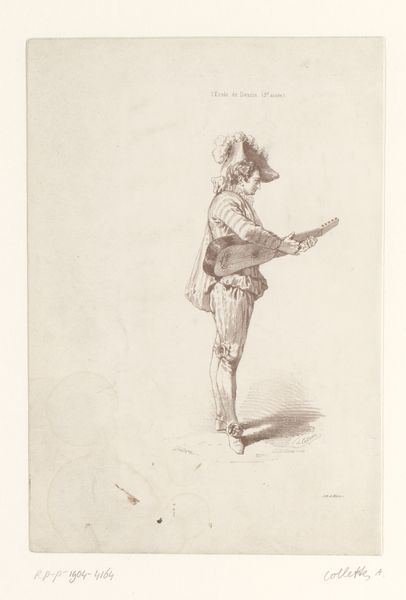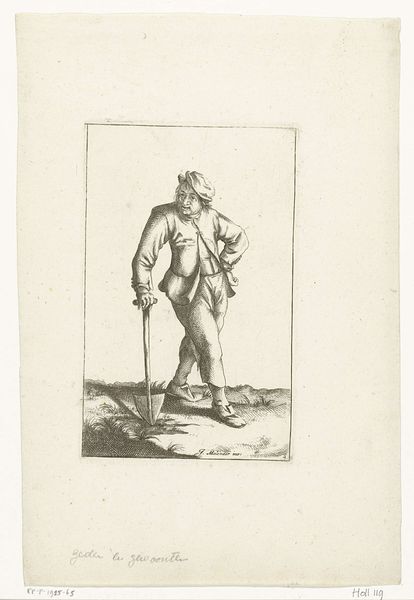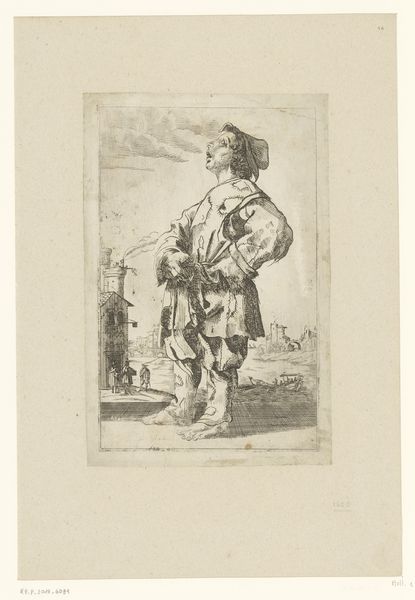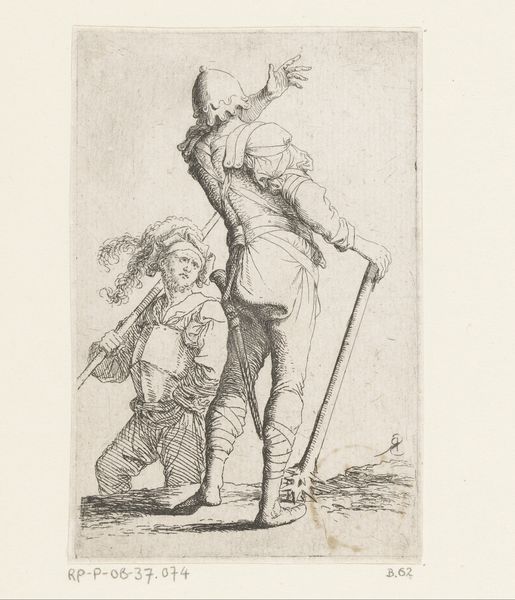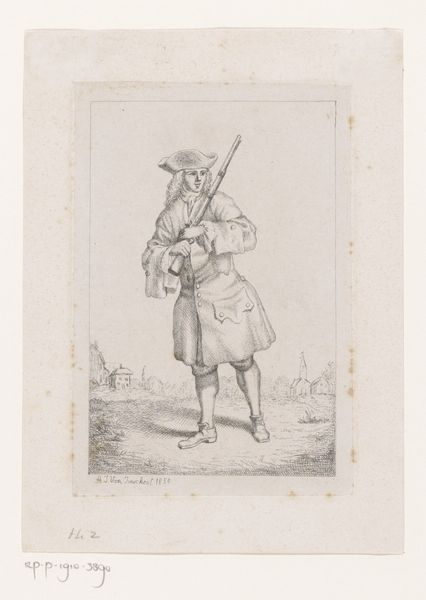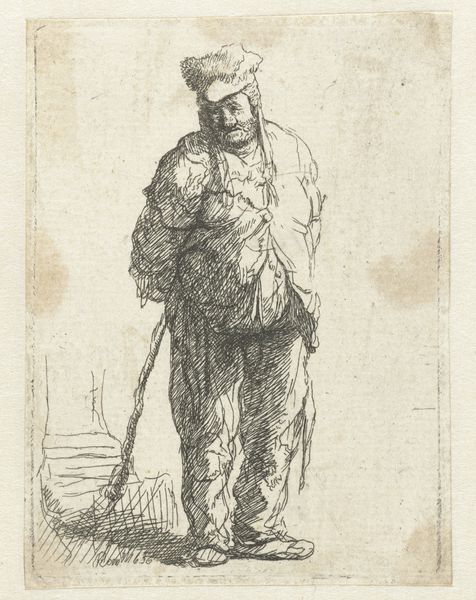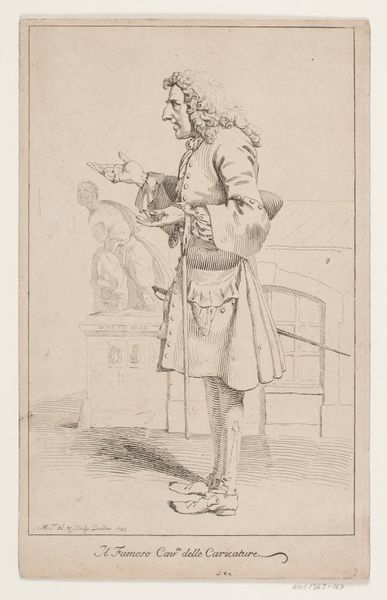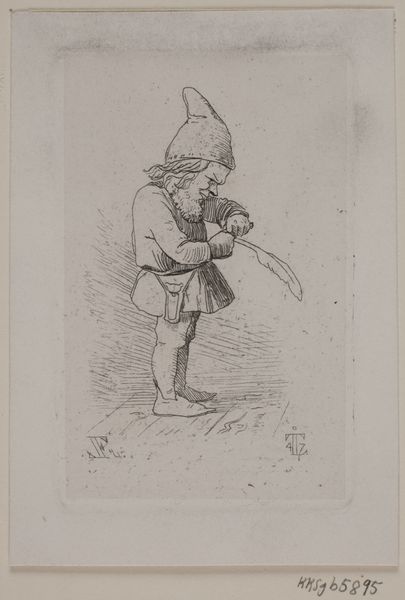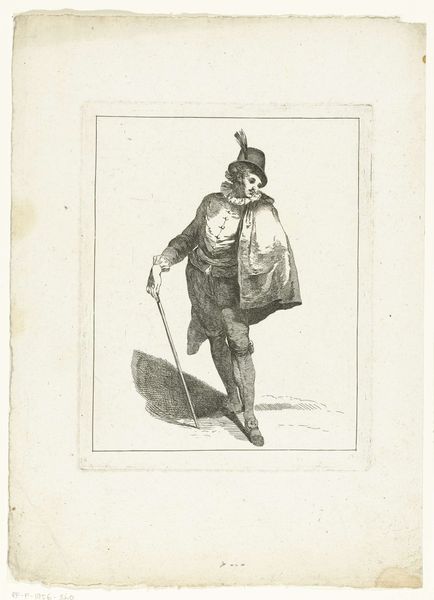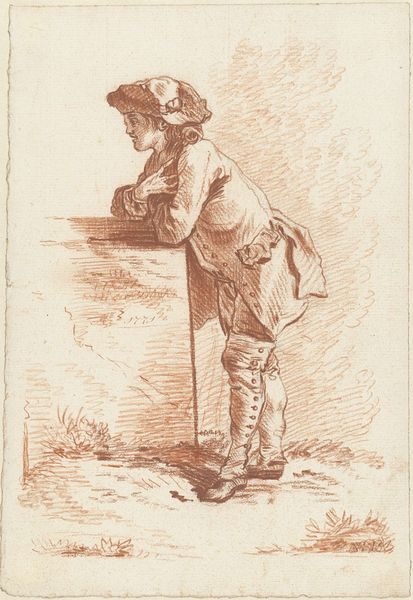
print, etching
#
baroque
# print
#
etching
#
figuration
#
history-painting
Dimensions: height 182 mm, width 120 mm
Copyright: Rijks Museum: Open Domain
Editor: Here we have Johann Elias Ridinger's "Standing Warrior with Long Shield," an etching from 1728. There’s a real sense of theatricality in the warrior's pose, but it also feels kind of melancholic to me. What strikes you when you look at this piece? Curator: I see this image as deeply embedded in the visual rhetoric of power and its performance. This "warrior," likely a symbolic figure rather than a literal portrayal, invites us to consider how identity is constructed through historical and societal expectations of masculinity and the ever present war machine of early European colonialization. How might the "long shield" serve not just as protection, but as a marker of privilege and dominance within a structured social order? Editor: That's a compelling point about the shield being a marker of privilege, I hadn’t thought about that. It makes me wonder, how does the baroque style itself play into this construction of power you’re talking about? Curator: The Baroque, with its inherent drama and grandeur, becomes the perfect vehicle for glorifying power. The detailed etching emphasizes not just the figure's strength, but the opulence associated with authority. Think about the history painting context in which this work was conceived. Whose stories get told, and who is omitted? Moreover, consider that the tools and craft to even reproduce this etching are a kind of privilege. Editor: So, you're suggesting that the artist, perhaps unconsciously, participated in reinforcing existing power dynamics through his artistic choices and reproduction of this image? Curator: Precisely. This print invites us to unpack those layers and consider the continued impact of these visual languages today, especially when evaluating representations of violence. It prompts the viewer to confront uncomfortable truths about historical narratives and their lasting effects. Editor: That gives me a lot to think about. I'll definitely be looking at art through a different lens now. Curator: That's the beauty of art, isn't it? It encourages continuous questioning and challenges our perceptions.
Comments
No comments
Be the first to comment and join the conversation on the ultimate creative platform.

